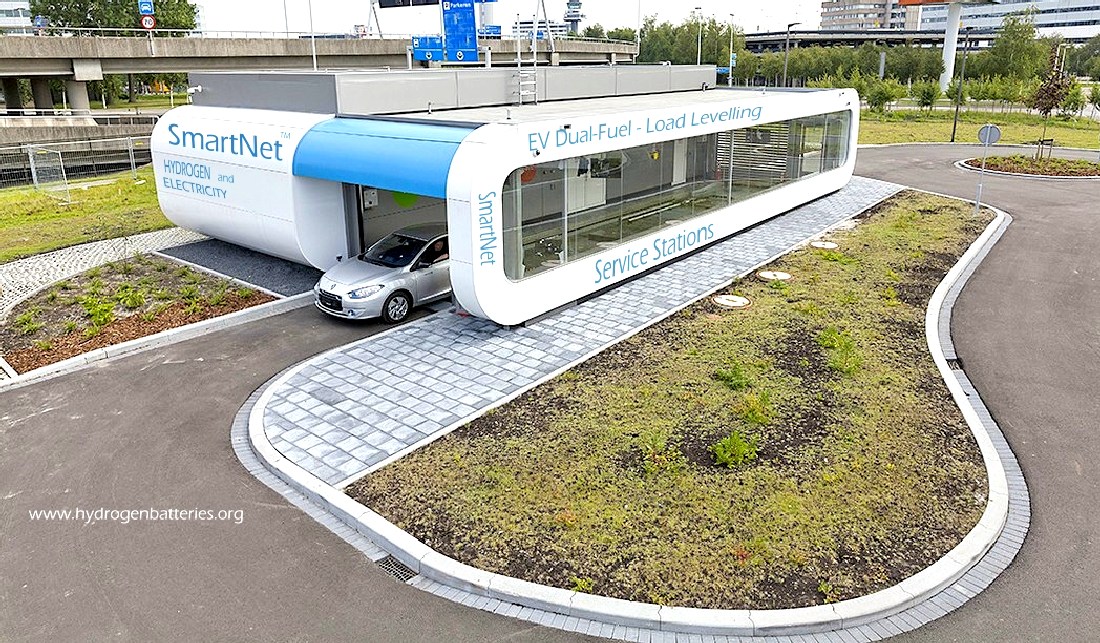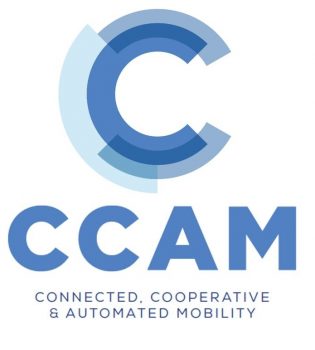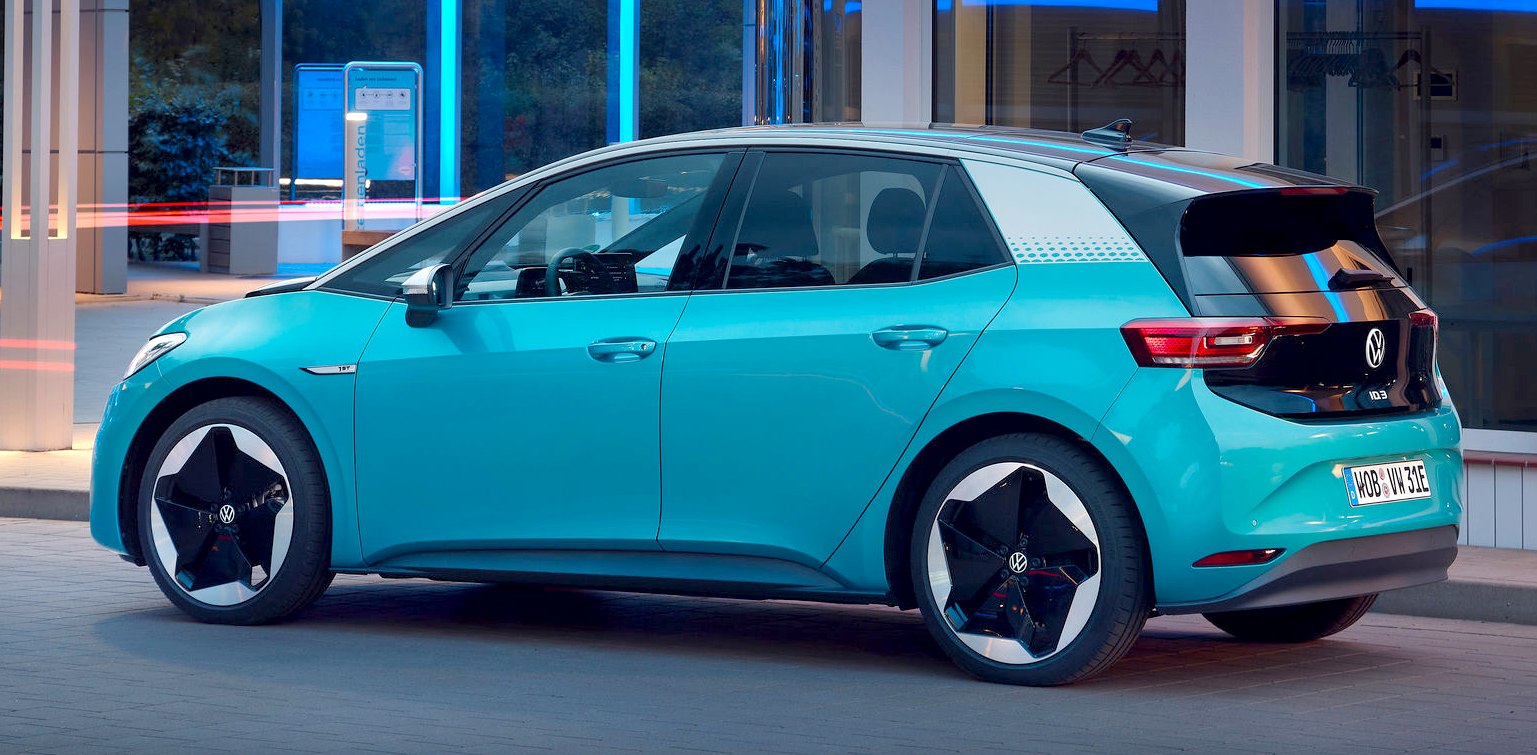|

Imagine
a means to store electricity as green hydrogen for the load levelling of
national grids, while also supplying energy for commercial vans and heavy
duty trucks. Fuel cells provide a way to convert hydrogen gas into
electricity, but on their own they do not represent a solution. The way
forward is with hydrogen
batteries, as the beating heart of the Smartnet™
dual-fuel infrastructure.
CCAM
aims to exploit the full systemic benefits of new mobility solutions to
increase safety, reduce environmental impacts, inclusively. By bringing together the actors of the complex cross-sectoral value chain, the
CCAM Partnership aims to work on a shared, coherent and long-term R&I agenda.
Cooperative, Connected and Automated Mobility (CCAM) is expected to reshape the way we travel and move, not only in Europe, but around the world. With CCAM, the vehicles are well integrated into the mobility and transport system, its infrastructure, all operations and new services.
We wonder what part Smartnet™ may have to play in such scenarios, where
automation may demand automated recharging and hydrogen refuelling?
In autumn 2019
European Commission services asked potential partners to further elaborate
proposals for the candidate European Partnerships identified during the strategic
planning of Horizon
Europe. Draft proposal for a European Partnership under
Horizon Europe
Connected, Cooperative and Automated Mobility (CCAM) Version 13 May 2020 - Summary The proposed Partnership aims to harmonise European R&I efforts to accelerate the
implementation of innovative CCAM technologies and services. It aims to exploit the full
systemic benefits of new mobility solutions enabled by CCAM: increased safety, reduced
environmental impacts, and inclusiveness. By bringing together the actors of the
complex cross-sectoral value chain, the Partnership will work on a shared, coherent and long-term R&I
agenda. The Vision of the Partnership is: “European leadership in safe and sustainable road
transport through automation”. The
European
Commission, together with the ARCADE project, held the third European Conference on Connected and Automated Driving, which was held virtually.
The 3rd EU conference on connected and automated driving – "EUCAD 2021” took place from 20 to 22 April 2021. The event brought together political leaders from the European Commission and the Member States with high-level representatives of industry, knowledge institutes and road authorities to exchange knowledge and experience on the most recent technological developments and policies in the area of CCAM.
The conference was opened by Mariya Gabriel, Commissioner for Innovation, Research, Culture, Education and Youth, and Adina Vălean, Commissioner for Transport. The highlight in the first plenary was the “CCAM Partnership for Europe”, introduced by Rosalinde van der Vlies, Director, DG RTD. The EUCAR Chair, Helene Niklasson, Vice President Innovation Ecosystems and Partnerships,
Volvo Group, emphasised the industry’s ambition for sustainable, safe, clean, and efficient road transport solutions, providing freedom of mobility to all, with benefits to users and society. She
is quoted as saying: “We have high expectations on CCAM to foster a strong collaborative mindset, develop and bring automated solutions to be implemented and integrated into the society”. Other speakers in this session were Sabine Kuehschelm, Conference of European Directors of Roads (CEDR) HL Representative for CAD; Anjes Tjarks, Senator for Transport and Mobility of the Free and Hanseatic City of Hamburg; and Sigrid de Vries, Secretary General of CLEPA (EU Association of Automotive Suppliers).
As Chairman of the newly founded Association supporting the CCAM Partnership, Armin Gräter from BMW Group participated in the closing session. He identified the next challenges and topics to address across thematic areas. Other speakers were Ingrid Skogsmo, Senior Research Leader Future Transportation, Swedish National Road and Transport Research Institute (VTI); Laurianne Krid, Director General, Fédération Internationale de l’Automobile (FIA) Region I; and Steve Philips, Secretary-General, CEDR. Finally, Jean-Eric Paquet, Director General, DG RTD, European Commission emphasised in his closing remarks the user-centred and all-inclusive mobility approach of the CCAM Partnership, complementing the necessary technology development.
The theme was making CCAM a reality together, presumably excluding the UK,
since Brexit, but that is at the moment a gray area. The
European Commission intends to establish a new European Partnership on Cooperative, Connected and Automated Mobility (CCAM) under Horizon Europe. The partnership aims to align better public and private efforts through a common and long-term R&I agenda. It will serve to accelerate the implementation of smart, innovative and sustainable mobility solutions for all. HORIZON
EUROPE The aim of European partnerships in
Horizon Europe is to deliver on global challenges and modernise industry. European Partnerships are key implementation tools, contributing significantly to achieving the EU’s political priorities. The Partnerships are formed between the
European Commission and private and public stakeholder addressing Europe’s most pressing challenges through coordinated research and innovation actions. By bringing private and public partners together, European Partnerships help to avoid the duplication of investments and contribute significantly to leveraging public funding through private investments.
The Rationale for the CCAM Partnership
Mobility is crossing a new – digital – frontier, allowing vehicles to communicate with each other, with the road infrastructure and with other road users. This will enable a coordination and cooperation between road users, and managing traffic and mobility at an entirely new level (e.g. warning messages not limited by line-of-sight or congestion management using real-time information).
Current road vehicles already provide advanced assistance systems and intervene when a dangerous
situation is detected. Future systems will have 360° vision of the surrounding environment, significantly reduced reaction times and will be able to
control the vehicle for extended periods and, at some point in the future, will no longer rely on human back-up.
Combining connectivity, cooperative systems and automation will enable automated and fully orchestrated manoeuvres, bringing us closer to Vision Zero.
Cooperative, Connected and Automated Mobility (CCAM) is expected to reshape the way we travel and
move, not only in Europe, but around the world. With CCAM, the vehicles are well integrated into the mobility and transport system,
its infrastructure, all operations and new
services. In theory, fully automated driving could double existing average road infrastructure capacity by smoothing traffic flow, while enabling off-peak usage of infrastructure for freight transportation (e.g. night-time deliveries). Smart traffic management will further increase efficiency and reduce congestion.
CCAM enabled shared mobility services will enable seamless integration with public transport and
Mobility-as-a-Service (MaaS) platforms. It will provide accessible mobility to people who cannot drive (e.g.
incapacitated or disabled people, and those without a driving license), or who no longer want to drive. Furthermore, by offering driverless transportation solutions, CCAM can provide vulnerable people with mobility and options for goods deliveries at low health risk, which is particularly important in epidemic situation like COVID-19. 
REGULATIONS AND POLICIES
Connected and automated driving technologies have experienced a rapid development and promise a massive deployment in Europe and internationally. In order to further push forward these technologies, coordination is needed to prevent a patchwork of rules and procedures and encourage a harmonised approach in research, development, testing and deployment, therefore increasing market and policy certainties.
Evolving from the Horizon 2020 project CARTRE (Coordination of Automated Road Transport Deployment for Europe, 1/10/2016 – 30/09/2018), the objective of the ARCADE project is to further analyse regulations coming into force in several European Member States, as well as at international level, as well as to review the standards and guidelines related of vehicles with high levels of automation from different perspectives.
To that aim, the most relevant initiatives are mentioned in this section as well as links to detailed information. This information is of interest for those organizations working on Automated Vehicles, including research institutions, industry and regulating authorities. The Regulation and Policies section compiles the following information:
The current status and future regulatory needs of legislative bases and success factors for the approval of automated vehicles on public roads. Regulations for automated driving functions. Admittance legislation for current vehicles is only on the European level, and restricted to SAE level 2 (Type Approval).
National regulations (EU, NON-EU) in order to run tests involving connected and automated vehicles. The National legislation focuses only on Field Operational Tests (experiments and demonstrations) for SAE levels 3 and higher. Found documentation of European counties that allow open road testing are Austria, Belgium, Germany, Netherlands, Spain, Sweden, and the UK. 
CONTACTS
Commission services: EU-CCAM-PARTNERSHIP@ec.europa.eu
Partners: European Road Transport Research Advisory Council - info@ertrac.org

The future of transportation is electric, with fewer carbon emissions, zero air pollution and less noise, electric vehicles don’t just pay off for the environment – they also pay off for you. You can expect lower energy costs, lower total cost of operation.
Electric vehicle technology is needs to be more advanced. Even with smart charging networks, driving an electric vehicle in 2021 is inconvenient range wise, though, With some of the latest electric car models on the market, you can travel 300-400 km without charging. The same is not true of commercial vans and trucks. These have seriously restrictive range between charges.
LINKS
& REFERENCE
https://www.eucar.be/eucad-2021-a-ccam-partnership-for-europe/
https://www.connectedautomateddriving.eu/
https://ec.europa.eu/info/events/3rd-eu-conference-connected-automated-driving-eucad-2021-yes-we-ccam-partnership-europe-2021-apr-20_en
Please
use our A-Z
INDEX to navigate this site
This
website is provided on a free basis as a public information service.
copyright © Climate Change Trust 2021. Solar
Studios, BN271RF, United Kingdom.
|



